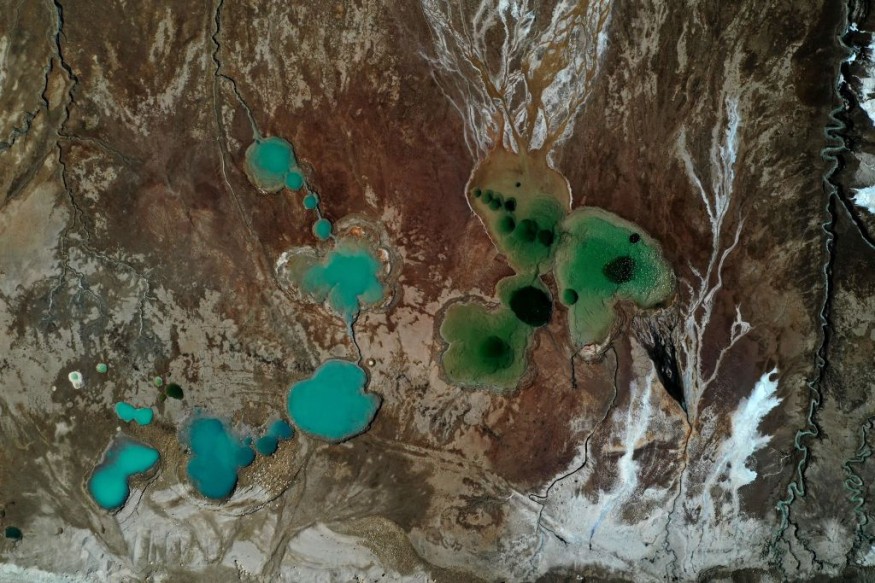A landmark body of work led by the Carnegie Institution for Science details the origins and diversity of every known mineral on Earth, a landmark body of work that will help reconstruct the history of life on Earth, guide the search for new minerals and ore deposits, predict possible future life characteristics, and aid the search for habitable planets and extraterrestrial life.

Carnegie scientists Robert Hazen and Shaunna Morrison outline a unique strategy of clustering (lumping) related species of minerals together or breaking off new species depending on when and how they evolved in twin studies published today by American Mineralogist and financed in part by NASA.
Mineral Genisis
When mineral genesis is considered, the number of "mineral types" - a newly invented phrase - exceeds 10,500, nearly 75 percent more than the 6,000 mineral species recognized by the International Mineralogical Association (IMA) solely based on crystal structure and chemical composition.
"This discovery significantly transforms our picture of the diversity of minerals on the globe," says Dr. Hazen of the Earth and Planets Laboratory at the Carnegie Institution for Science in Washington, DC.
Water facilitated the transport of 80% of the Earth's minerals.
"For example, water mediated more than 80% of Earth's minerals, which is profoundly vital to mineral diversity on our planet and explains one of the primary reasons why the Moon, Mercury, and even Mars have significantly fewer mineral species than Earth."
"The work also tells us something extremely deep about biology's involvement," he says. "One-third of Earth's minerals could not have developed without biology, such as shells, bones, and teeth, or bacteria, or the crucial indirect function of biology, such as establishing an oxygen-rich atmosphere, which resulted in the formation of 2,000 minerals that would not have formed otherwise."
"Each mineral specimen has a tale to tell, and each is a time capsule that discloses Earth's past in a way that nothing else can."
More than 40% of the Earth's mineral species developed in more than one method.
According to the report, nature formed 40% of Earth's mineral species in more than one method, such as abiotically and with the assistance of cells, and in some cases employed more than 15 distinct recipes to manufacture the same crystal structure and chemical composition.
Also Read : Mysterious Black Glass in Chilean Desert Caused by Exploding Comet Thousands of Years Ago
Recognized Minerals

Nine of the 5,659 recognized mineral species studied by Hazen and colleagues arose from 15 or more different physical, chemical, and/or biological processes, ranging from near-instantaneous formation by lightning or meteor strikes to changes caused by water-rock interactions or transformations at high pressures and temperatures over hundreds of millions of years.
And, as if to demonstrate her sense of humor, Nature has created pyrite (aka Fool's Gold) in 21 distinct ways during the previous 4.5 billion years, making it the mineral world's champion of various beginnings. Pyrite occurs at high and low temperatures, with and without water, with and without the assistance of bacteria, and in hostile conditions where life has no place.
Nine of the 5,659 recognized mineral species studied by Hazen and colleagues arose from 15 or more different physical, chemical, and/or biological processes, ranging from near-instantaneous formation by lightning or meteor strikes to changes caused by water-rock interactions or transformations at high pressures and temperatures over hundreds of millions of years.
And, as if to demonstrate her sense of humour, Nature has created pyrite (aka Fool's Gold) in 21 distinct ways during the previous 4.5 billion years, making it the mineral world's champion of various beginnings. Pyrite occurs at high and low temperatures, with and without water, with and without the assistance of bacteria, and in hostile conditions where life has no place.
Pyrite is produced and supplied by meteorites, volcanoes, hydrothermal deposits, pressure between layers of rock, near-surface rock weathering, microbially-precipitated deposits, and numerous mining-related processes, including coal mine fires and many more mechanisms.
Hazen and Morrison created a database of every known mineral production process to obtain their results. They identified 10,556 different combinations of minerals and modes of the formation using large, open-access mineral databases (mindat.org and rruff.ima/info), which were supplemented by thousands of primary research articles on the geology of mineral localities around the world, as detailed in the paper "On the paragenetic modes of minerals: A mineral evolution perspective."
That study and a sister publication published concurrently by the same journal, "Lumping and splitting: toward a categorization of mineral natural types," co-authored by Drs. Hazen and Morrison worked with Russian Academy of Sciences mineralogists Sergey Krivovichev and Robert Downs of the University of Arizona.
Objective of the Study
Their objective is to "understand how mineral diversity and distribution have changed throughout deep time and propose a system of mineral categorization that represents mineral beginnings in the context of developing terrestrial environments."
Differentiating minerals depending on how and when they appeared across Earth's 4.5 billion year history
For similar travel news, don't forget to follow Nature World News!
© 2025 NatureWorldNews.com All rights reserved. Do not reproduce without permission.





